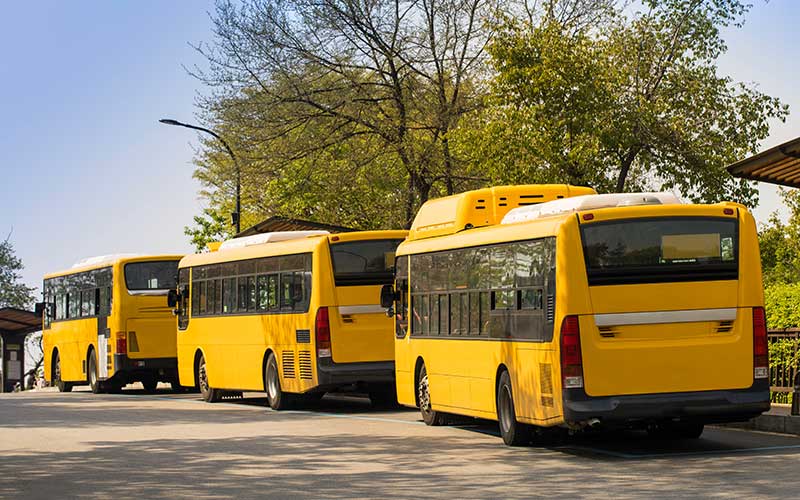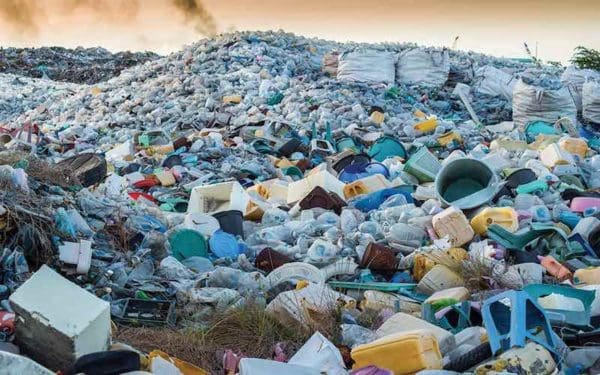
Electric, zero-emission medium- and heavy- duty vehicles (like these electric school buses) can keep serving our needs while slashing climate-damaging pollution. Photo: Shutterstock, Jung U.
This morning, I was relieved to see a delivery truck dropping a box of diapers at my doorstep (not a moment too soon!). And when my refrigerator went on the fritz last month, it was another delivery truck that came to the rescue with a replacement. The entire country depends on trucks, buses, and large tractor trailers to transport a variety of goods: from food to furniture and everything in between.
Unfortunately, transportation is the largest source of climate-warming emissions in New England and the entire country. Not to mention, vehicles spew pollution that warms our climate and dirties the air. And these very same medium- and heavy-duty vehicles are incredibly gas guzzling and polluting.
Let’s look at how cleaning up big trucks, buses, and vans can help us reach net zero climate-damaging emissions by 2050.
Dirty Fuels and Deadly Diesel
Medium- and heavy-duty vehicles, including buses, box trucks, tractor-trailers, and vans, are those that weigh over 10,000 pounds. We use them to transport multiple commuters, passengers or large quantities of packages, goods, and other cargo. Unfortunately, such vehicles often rely on the dirtiest of fuels: among them is deadly diesel.
Diesel has a long and sordid history of polluting our air and climate. This fuel is linked to asthma and other respiratory illnesses. It also aggravates preexisting conditions like heart and lung disease. Worse, the public health impacts of diesel disproportionately affect communities already overburdened by environmental hazards, such as communities of color or low socioeconomic status.
Diesel trucks account for 50% of nitrogen dioxide emissions, an air pollutant that warms our climate and degrades air quality. This dirty diesel byproduct is also linked to premature death and respiratory or cardiac diseases. According to the University of Virginia , low-income communities and communities of color get exposed to 28% more of this pollution compared to majority white and high-income communities. That’s because racist and classist policies sited polluting major highways and industrial compounds close to these communities, overburdening them with the accompanying environmental harms.
Big Solutions for Big Vehicles
Our economies and way of life hinge on the use of medium- and heavy-duty vehicles, so these forms of transportation must be part of our climate solutions. And these solutions need to repair the inequities that force frontline communities to bear the brunt of environmental hazards.
One way to cut pollution is to regulate the amount of polluting emissions spewing from vans, buses, and trucks. And our state governments can also require manufacturers to produce and sell more zero-emission medium- and heavy-duty vehicles. That means trucks with no tail pipes at all!
In fact, almost every New England state has adopted or has plans to adopt California’s clean trucks rules which accomplish these two strategies. The federal Clean Air Act allows California to create and implement stricter vehicle emission standards than the federal government, and other states can choose to adopt the California standards. Doing so here in New England (along with adopting California’s standards for clean cars, too) would be a tremendous step toward our goal of net zero climate-damaging emissions by 2050.
From delivering diapers and refrigerators to getting commuters and children where they need to go, medium- and heavy-duty vehicles can continue to serve our needs while supporting the critical transition to a clean energy future.



